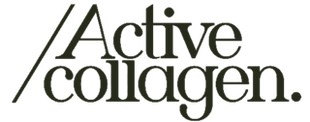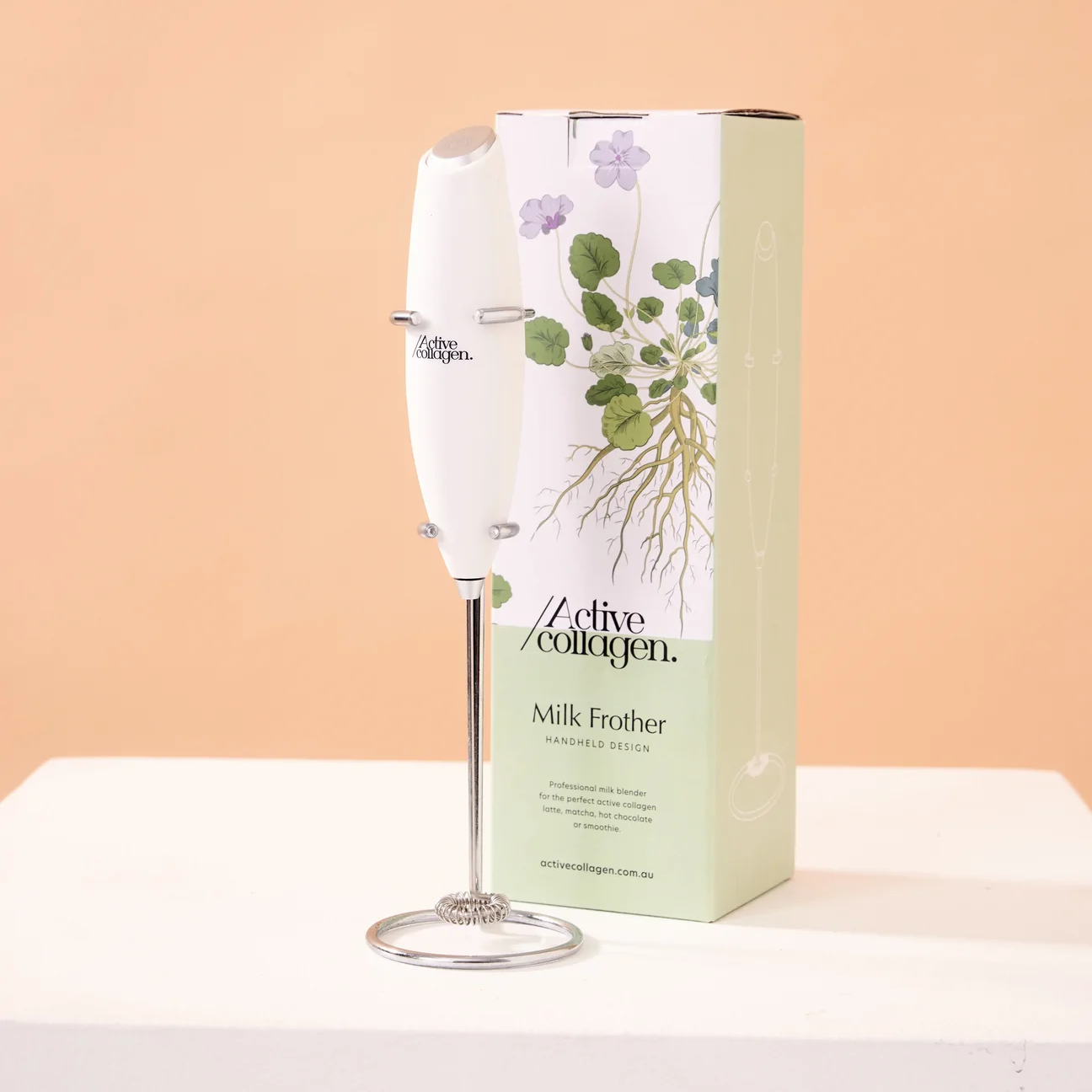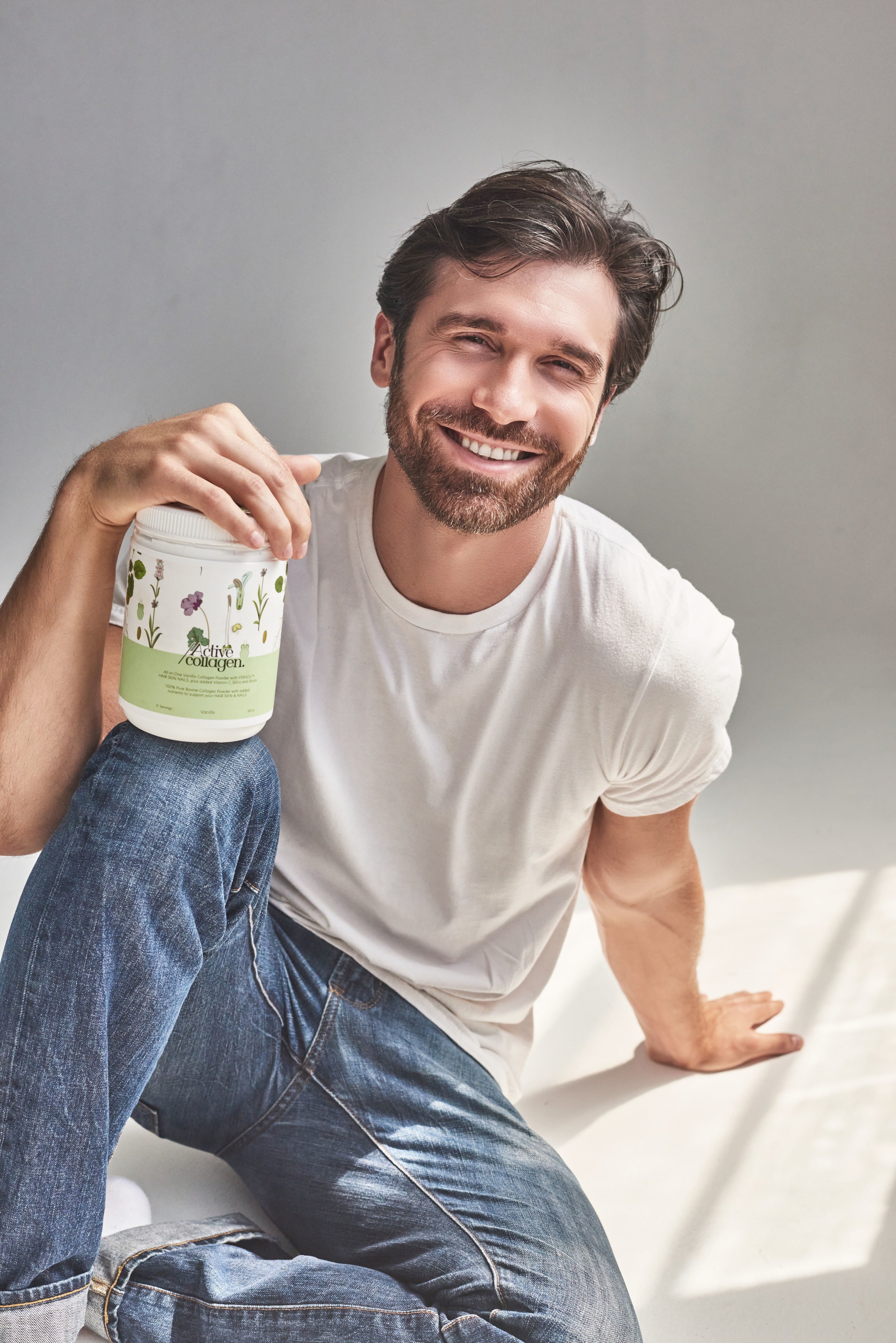Active Collagen & Male Hair Loss
Male androgenetic alopecia (MAGA) – or commonly referred to as male pattern baldness – affects around 80% of men. Although it predominantly arises later in life, it can also appear at earlier stages depending on certain factors.
Hair is a large part of a person’s appearance. So, when hair begins thinning often there are psychological effects that ensue such as lowered self-esteem, confidence and increased levels of anxiety surrounding appearance.
Yes, there are treatments out there that are applied topically claiming to stimulate hair growth, which vary in effectiveness of outcomes. However, how can hair loss be supported nutritionally to address underlying factors? And could Active Collagen help?
MAGA: What is Going On?
In MAGA hair is lost in a distinct pattern on the scalp, usually from front to back, causing a receding hairline. Although there are some environmental factors that may initiate the beginning of hair loss MAGA is generally caused by genetic predisposition together with decreased levels of androgens – hence the ‘androgenetic’ part in its title.
A male may inherit certain genes that predispose him to hair loss, which unfortunately is one factor we cannot change. They may, however, also have low levels of dihydrotestosterone an androgen that has been identified as a key player in MAGA development.
Hair grows in a cycle with four phases – funnily enough much like a woman’s menstrual phase:
1. Anagen: hair growth
2. Catagen: transition phase
3. Telogen: resting phase
4. Exogen: hair shedding
In MAGA the period between each phase is shortened which fastens hair turnover. More specifically, the anagen phase of growth is shortened and the telogen phase of rest is lengthened. Alongside this, the actual hair follicle starts to constrict known as hair follicle miniaturisation. In response to constriction, the follicles begin producing thinner hairs which are fragile and fall out easily.
Vitamins and minerals are essential for healthy hair and its growth. So, which ones can we specifically focus on to support and maybe even prolong hair health in men?
Biotin
Biotin is a part of the group of B vitamins, taking the title of B-7. It is also known as ‘vitamin H’ which in German the H stands for ‘haar & haut’ - hair & skin. it is a water-soluble vitamin therefore if consumed in abundance the body will excrete what is not needed and isn’t stored for later use. Biotin is one vitamin that is utilised within the cosmetic health space praised for its effects in producing healthier hair and nails.
Biotin’s function in contributing to healthier hair is through its involvement in protein synthesis. Our hair is a protein structure, mostly made up of keratin, which biotin stimulates the production of. A 2019 study showed that MAGA patients had suboptimal levels of biotin which when reversed by proper consumption of biotin rich foods or supplementation may increase hair quality and texture.
Adequate intakes of biotin for males is 30mcg/day which can be obtained through wholefoods such as egg yolks, liver, spinach, mushrooms, rice and oats. Although in states of deficiency, supplementation could be considered for reaching optimal levels faster.
Biotin in 5.8g serve Active Collagen: 2500mcg.
Silica
After oxygen, silica – or silicon - is the second most plentiful element in nature. Although we may not consider getting enough silica everyday it is present in both plant and animal sources, as well as water, as a trace mineral.
High contents of silica found in hair are said to lower the rate of hair loss and increase hair brightness. Studies utilising silica supplementation also show positive results with certain properties of hair such as an increased hair strand resistance to breakage after 9 months of supplementation. So although silica may not directly stimulate hair growth, it does provide a stronger integrity to the hair structure.
There isn’t a recommended daily intake for silica in Australia. However, if you are eating a wholefood diet with lots of variety and proper hydration you should already be getting the minimum.
Silica in 5.8g serve Active Collagen: 396mg.
Lysine
Lysine or L-Lysine is an essential amino acid, the small building blocks of larger proteins, found in meat, legumes, some cheeses and eggs. It is essential meaning the body cannot make it on its own and must be consumed through the diet. Protein malnutrition has been linked to increased hair loss due to our hair being mostly 100% protein.
Lysine deficiencies are correlated with low iron levels as the amino acid aids iron absorption. Though in regard to hair, having suboptimal levels of iron such as iron deficiency anaemia has been linked to greater hair loss or shedding.
The androgen component of MAGA, having high levels of DHT, may also be supported with optimal intakes of l-lysine. Having high levels of DHT is undesirable for hair growth, though research shows that l-lysine produces factors that block DHT within the body. When excess DHT is blocked this allows for a more desirable hair growth environment – prolonging the anagen phase of hair growth.
Lysine in 5.8g serve Active Collagen: 176mg
It’s safe to say that MAGA can be supported through the diet with even just a few little nutritional tweaks, like taking Active Collagen All-In-One Hair Skin & Nails, to boost your levels of hair loving nutrients. However, it is important that you consult with a professional for ruling out underlying causes of hair loss before tackling it on your own.
Ellis, J. A., Sinclair, R., & Harrap, S. B. (2002). Androgenetic alopecia: pathogenesis and potential for therapy. Expert reviews in molecular medicine, 4(22), 1–11. https://doi.org/10.1017/S1462399402005112
Wall, D., Meah, N., Fagan, N., York, K., & Sinclair, R. (2022). Advances in hair growth. Faculty reviews, 11, 1. https://doi.org/10.12703/r/11-1
El-Esawy, F. M., Hussein, M. S., & Ibrahim Mansour, A. (2019). Serum biotin and zinc in male androgenetic alopecia. Journal of cosmetic dermatology, 18(5), 1546–1549. https://doi.org/10.1111/jocd.12865
Patel, D. P., Swink, S. M., & Castelo-Soccio, L. (2017). A Review of the Use of Biotin for Hair Loss. Skin appendage disorders, 3(3), 166–169. https://doi.org/10.1159/000462981
Saleem, F., & Soos, M. P. (2023). Biotin Deficiency. https://www.ncbi.nlm.nih.gov/books/NBK547751/
National Health and Medical Research Council. (2006). Biotin. Nutrient Reference Values. https://www.eatforhealth.gov.au/nutrient-reference-values/nutrients/biotin
Araújo, L. A., Addor, F., & Campos, P. M. (2016). Use of silicon for skin and hair care: an approach of chemical forms available and efficacy. Anais brasileiros de dermatologia, 91(3), 331–335. https://doi.org/10.1590/abd1806-4841.20163986
Gowda, D., Premalatha, V., & Imtiyaz, D. B. (2017). Prevalence of Nutritional Deficiencies in Hair Loss among Indian Participants: Results of a Cross-sectional Study. International journal of trichology, 9(3), 101–104. https://doi.org/10.4103/ijt.ijt_48_16
Guo, E. L., & Katta, R. (2017). Diet and hair loss: effects of nutrient deficiency and supplement use. Dermatology practical & conceptual, 7(1), 1–10. https://doi.org/10.5826/dpc.0701a01




